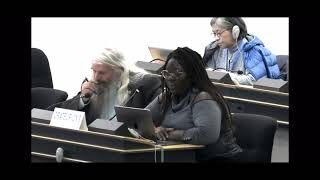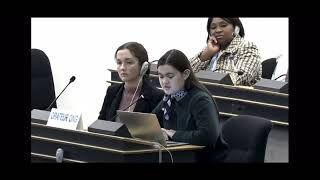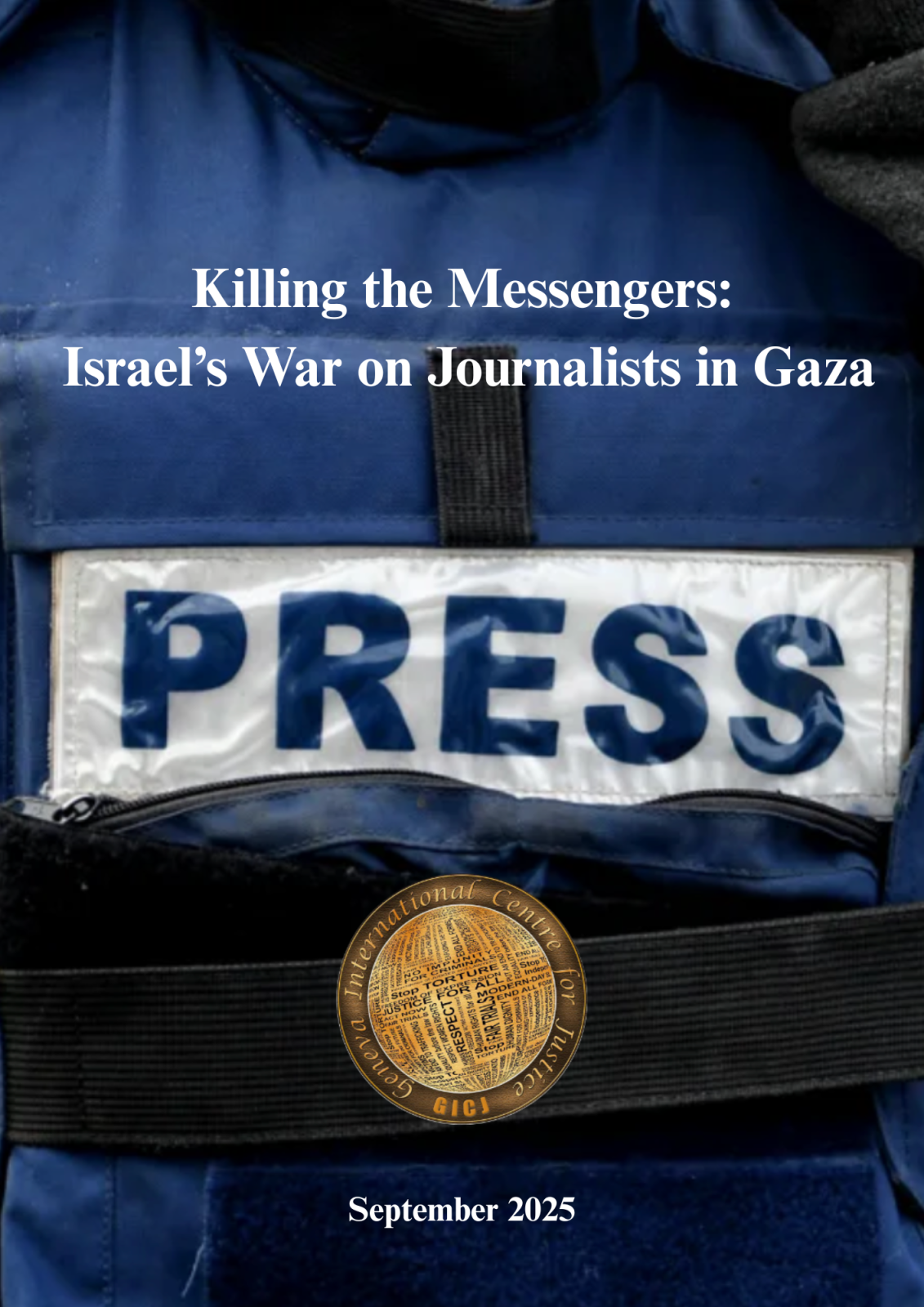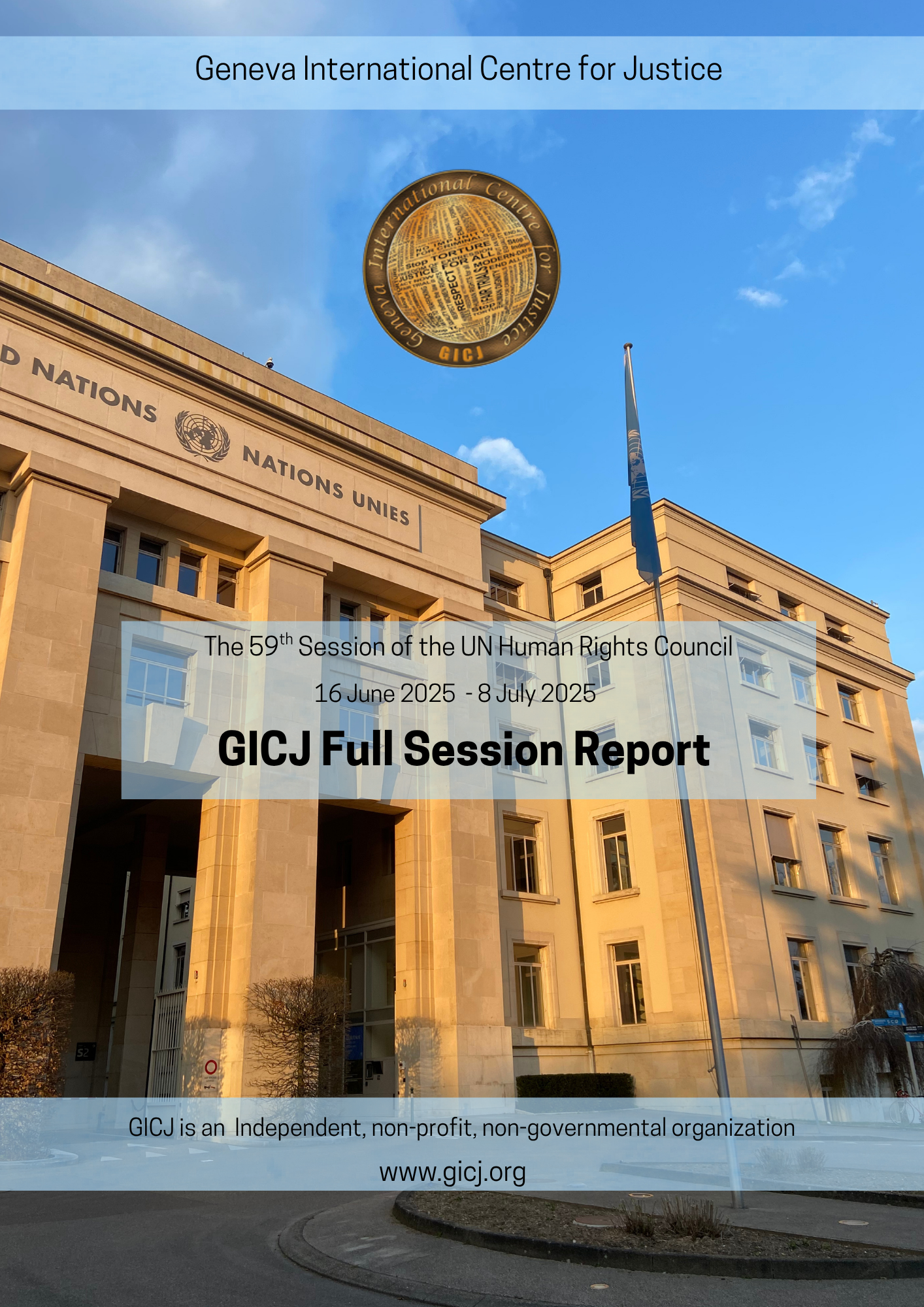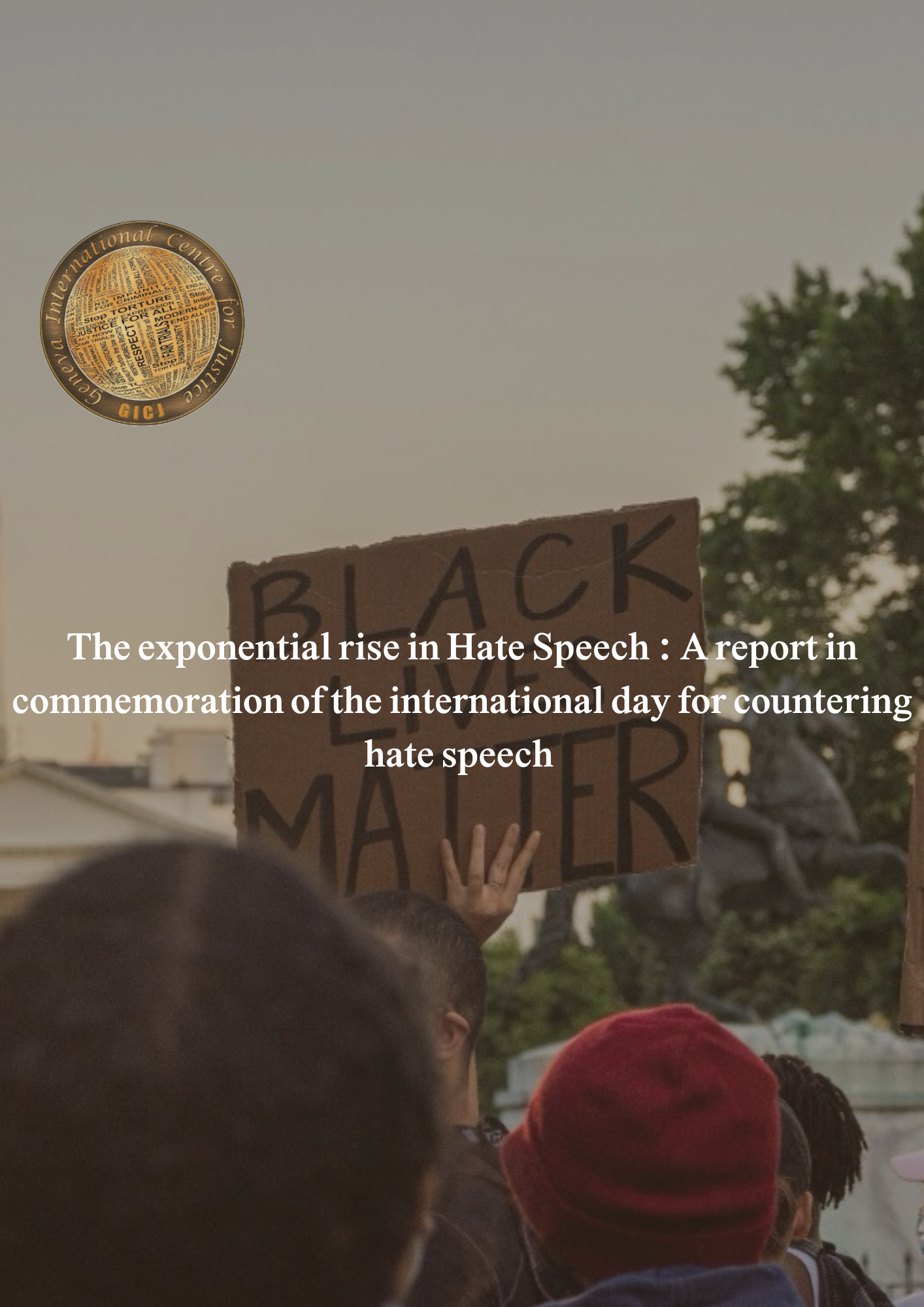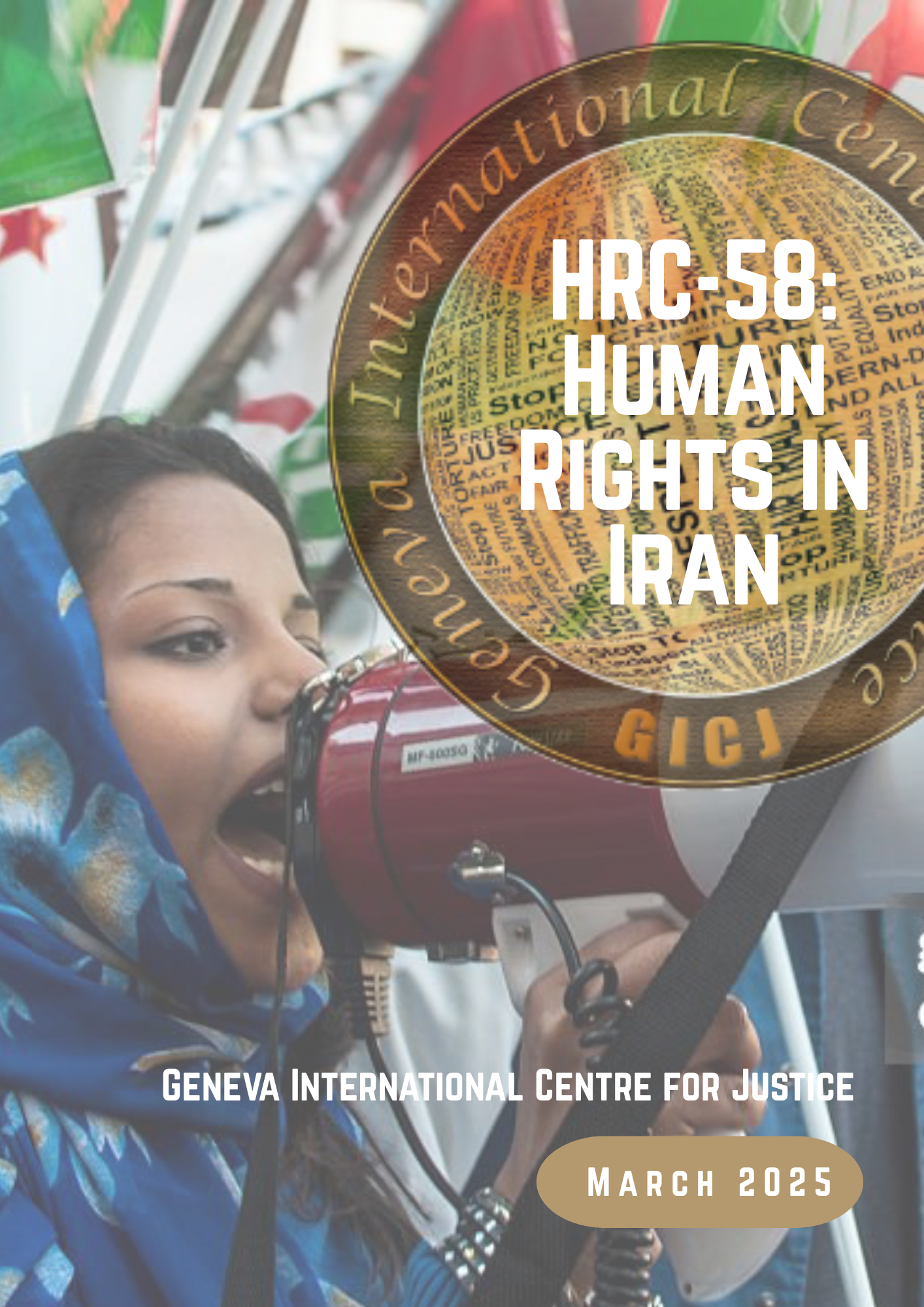By Shyla Gheek / GICJ
On an evening in Beirut, in October 2024, the Merhi family gathered at home, sharing a quiet moment over a simple pasta dinner. Minutes later, their world was shattered, glass splintered, walls crumbled, and the life they'd built was reduced to the wreckage, as Israeli rockets tore through their neighbourhood.
Lebanon is once again at the epicentre of a growing humanitarian disaster, driven by escalating violence and destruction following Israel’s recent offensive attacks targeting Hezbollah. The attacks continue to escalate, and the country’s infrastructure crumbles, while the world watches Lebanon face one of the darkest chapters in its modern history.

In a region already burdened by decades of conflict, the situation has rapidly deteriorated since September 2024, with relentless airstrikes ravaging southern Lebanon, the Bekaa Valley, and parts of Beirut. The United Nations Office for the Coordination of Humanitarian Affairs (OCHA) reported that over 3000 people have lost their lives, 71 of which were killed in airstrikes on 1 November alone. In addition to which over 1.3 million people have been displaced across Lebanon and into neighbouring countries.
This latest wave of displacement adds a new layer of hardship for a nation grappling with economic ruin and political paralysis, plunging more than half of Lebanon’s population, including vulnerable refugees, into poverty. The sheer scale of displacement has created a grim situation for civilians, many of whom are forced into overcrowded shelters or left to fend for themselves in the open and at-risk areas, such as Martyr’s Square in Beirut.
Lebanon, already home to the world’s highest per capita refugee population, now faces an unprecedented migration crisis; for the thousands of families seeking refuge, safe havens have become scarce. Amidst these dire conditions, the consequences of the migration crisis are felt not only by displaced families but also by a fragile state struggling to maintain basic services.
Background
The migration and refugee crisis in Lebanon is not a recent phenomenon. For years, the country has been wrestling with waves of displacement triggered by regional conflicts and internal instability.
Since the escalation of violence in Gaza, in October 2023, the situation has only worsened, with over 3,000 people killed and nearly 10,000 injured as a result of Israeli attacks. According to the International Organization for Migration (IOM), more than 608,000 people have been internally displaced since October 2023, with women making up 52% of the displaced population.
Additionally, this crisis has not only forced people from their homes but has also overwhelmed Lebanon's already fragile infrastructure. The capacity to house and care for those fleeing conflict is quickly evaporating, with the majority relying on overcrowded and under-resourced shelters. As of October 2024, nearly 181,000 people are seeking refuge in 978 collective shelters across the country, but 80% of these shelters are already at full capacity. Even basic supplies like mattresses, blankets, and kitchen sets are running scarce, as humanitarian agencies struggle to distribute essential items to the nearly 79,000 people in need since late September 2024. The situation is particularly dreadful for children, UNICEF reported that 350,000 children have been uprooted from their homes, further stressing the country’s already weakening support systems.
In terms of healthcare, there have been severe impacts caused by the ongoing conflict. Israeli airstrikes have particularly targeted medical facilities and health workers, leaving many without access to essential care. Furthermore, humanitarian workers are struggling to reach populations in the heavily bombarded southern regions and the death toll continues to rise. In the Northern region, border crossings like Masnaa/Jdaidet Yabous between Lebanon and Syria, have become specifically dangerous, forcing refugees and internally displaced persons to cross on foot, with many needing urgent medical attention.
Arab Barometer (central resource for quantitative research on the Middle East) reported that in 2023 there was a negative net migration rate of -0.94 per 1,000 people in Lebanon,. Henceforth, Lebanon faces immense challenges in managing both the outflow of its own citizens and the influx of those seeking refuge.
Syria
Lebanon has traditionally been a haven for Syrians escaping war, hosting over 1.5 million Syrian refugees—a testament to the shared history and tangled fates of the two nations. However, Lebanon’s socioeconomic collapse, which has pushed more than 80% of its population below the poverty line, has eroded its capacity to support refugees.
The migrant crisis continues to spill over into Syria as the two countries are deeply intertwined. Sharing a complex and longstanding relationship, this connection has seen flows of displacement in both directions. Since September 2024, the escalation of the humanitarian crisis has reversed a familiar pattern of the influx of refugees flow into Lebanon. Promptly, both Syrians and Lebanese are crossing into Syria, fleeing relentless violence and socioeconomic collapse within the Lebanese borders. According to the International Organization for Migration (IOM), more than 279,000 people have crossed into Syria, many of them are women and children, with an estimated 60% of these refugees being children or adolescents, some of whom are arriving without families.
The mass displacement is straining Syria’s already limited resources. At border crossings like Masnaa/ Jdaidet Yabous, essential items such as water, food, and shelter are in short supply. The Norwegian Refugee Council (NRC) has reported alarming increases in food prices and housing costs in Syria, further complicating an already desperate situation.
It is important to note that Lebanon is not a party to the 1951 Refugee Convention or to its 1967 Protocol, meaning that they don’t formally recognise refugee status. which has been used to justify stringent control over their refugee policies. This absence of formal protections, coupled with severe poverty, has left Syrians in Lebanon in an increasingly precarious position for many years, and now many of them are being forced back to Syria in search of basic security and resources.
The current exodus of refugees from both countries highlights the cyclical nature of displacement in the region, with each growing crisis echoing the past. For Syrians, it marks a tragic return to a homeland still scarred by its own decade-long civil war, underscoring how the region’s historical ties are bound by recurring patterns of flight and refuge.
Migrant Workers
The ongoing situation in Lebanon has revealed the vulnerabilities of migrant workers, who now face immense suffering with little support. Displacement has extended to at least 200,000 foreign workers forced out of their residences, many of whom have been denied entry to government shelters solely because they are not Lebanese.
The migrant workers have remained marginalised by Lebanon’s restrictive kafala sponsorship system, due to which workers’ legal status is tied to a single employer, creating a dependency that can easily lead to abuse, as migrant workers cannot leave their employer without risking legal repercussions. They are mostly from countries like Bangladesh, Ethiopia, Sudan, and Sri Lanka to escape poverty, however, they now find themselves stranded in Lebanon without any means to return home. Displaced migrant workers are now relying heavily on volunteer support, as the government has not provided any formal assistance.
The plight of migrant workers in Lebanon has also highlighted the abuses many endured even before the current crisis. Their working conditions were often marked by excessively long hours, lack of legal protections, and inadequate living standards. The system’s rigid restrictions have left hundreds of foreign workers abandoned and taking refuge, for example, there are 170 women from Sierra Leone currently residing in a makeshift shelter, a converted church in Beirut’s capital.
Role of the United Nations
With Lebanon’s economy in shambles and resources stretched thin, calls for international assistance have become louder. The UN and other international bodies have proposed safe evacuations for individuals; however, challenges persist. Most importantly, many lack the resources or documents to return home independently, and support for disabled migrant workers is even limited. The situation is particularly sour for the thousands of migrant workers in Lebanon, the crisis has exposed the grim consequences of a system that has failed to protect them, leaving them isolated, abandoned, and struggling to survive.
The refugee crisis in Lebanon has escalated into an intense humanitarian challenge, leading global and regional actors to step up and provide support. The IOM and the UN High Commissioner for Refugees (UNHCR) have rolled out extensive assistance programs to address immediate and long-term needs of those displaced in Lebanon. Humanitarian responses are focusing on essential relief, such as distributing supplies, providing psychosocial support, and assisting with travel arrangements for those seeking refuge outside Lebanon, including in the U.S., Canada, and parts of Europe.
In collaboration with the Lebanese government, IOM is implementing livelihood programs and community-stabilizing initiatives to empower both refugees and host communities. IOM's Head of Office in Lebanon, Mathieu Luciano, has reiterated the organisation’s commitment to scaling up efforts, supported by a $32.46 million Flash Appeal aimed at assisting over 400,000 people in Lebanon. Additionally, the IOM is engaging youth in civic activities, fostering leadership skills through initiatives like the Lebanese National Youth Parliament, created in partnership with the Lebanese Ministry of Education.
International stakeholders are also deeply involved. The United States, for instance, allocated an immediate $157 million in humanitarian aid for Lebanon in October 2024. This funding will support displaced persons and host communities within Lebanon and extend aid to those fleeing to Syria, where needs remain vast. Over the last year, the U.S. has provided $386 million to support vulnerable populations in Lebanon and Syria affected by the ongoing war in the Middle East, underscoring the urgency of this escalating situation.
UN leaders, such as UNHCR's Chief Filippo Grandi, have highlighted the humanitarian catastrophe in Lebanon, urging for a ceasefire to protect civilians and prevent further suffering. In tandem, The United Nations Interim Force in Lebanon (UNIFIL)—the peacekeeping mission monitoring the Blue Line (the line dividing Lebanon from Israel and the Golan Heights)—has expressed deep concern over military activities that endanger the stability of border areas. UNIFIL remains on duty-bound and their troops continue to stay deployed by the Blue Line, around which the villages are reported to be “completely destroyed and damaged.”
With Lebanon and Syria’s infrastructures overwhelmed, UNHRC’s Grandi warns the international community that there is a moral requirement for global assistance, stressing the need for a more decisive political resolution to prevent further violence and cyclical displacement.
Geneva International Centre for Justice (GICJ) expresses profound concern over the deepening humanitarian crisis unfolding in Lebanon, where continuous conflict and displacement have left thousands without homes, safety, or stability. Lebanon's extensive loss of infrastructure, along with the strain of accommodating displaced persons and an influx of refugees, has devastated years of hard-won progress in community development and social welfare.
We urge the international community to push for a ceasefire and exert pressure to end the violence in the Middle East. We recommend that neighbouring nations establish secure transit routes and temporary protections while ensuring additional support for Lebanon through increased volunteer deployments and logistical aid. Foreign migrants in Lebanon, particularly those receiving minimal assistance, require the support of immediate international intervention. This includes creating dedicated programs to offer legal aid, necessities, and pathways for evacuation or resettlement for those stranded and without recourse. As the Lebanese government struggles to meet demand, international actors must bridge these gaps, ensuring that all affected populations, regardless of nationality, receive adequate shelter, food, and protection.
Lebanon's struggle is emblematic of the mounting humanitarian crises gripping the region. The world cannot allow Lebanon's development to be reduced to ruins; it is imperative to act now to support Lebanon’s recovery and to prioritize sustainable solutions for displaced populations across the region.
Resources
- https://www.gicj.org/
- https://www.arabbarometer.org
- https://www.iom.int/news
- https://crisisresponse.iom.int/sites/g/files/tmzbdl1481/files/uploaded-files/IOM%20Flash%20Appeal%20for%20Lebanon%20Crisis%20Response%20_%20FINAL.pdf
- https://www.aljazeera.com
- https://state.gov/united-states-provides-humanitarian-assistance-in-response-to-the-escalating-crisis-in-lebanon/
- https://news.un.org/en/story/2024/10/1155411
- https://www.nrc.no/news/2024/october/displaced-people-pushed-to-the-brink-in-lebanon-and-syria/
- https://www.unhcr.org/news/briefing-notes/unhcr-lebanon-crisis-deepens-israeli-airstrikes-intensify
- https://www.soschildrensvillages.ca/news/lifesaving-aid-displaced-children-and-families-lebanons-humanitarian-crisis-169
- https://www.unhcr.org/lb/at-a-glance




